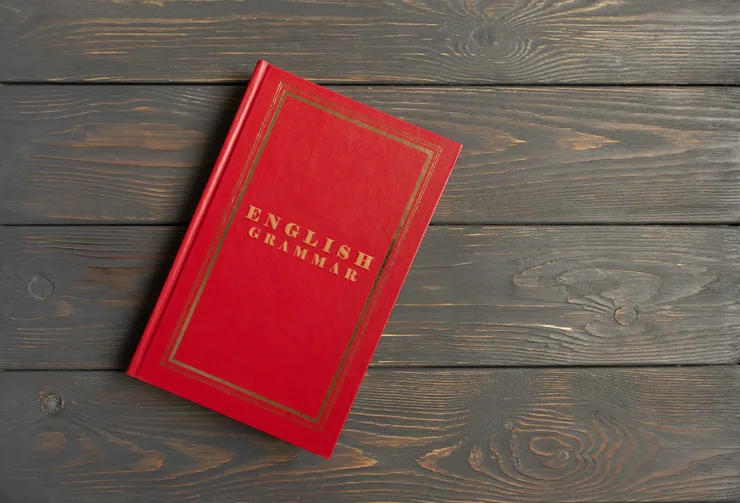یک جملهوارهی اسمی (noun clause)، جملهوارهی وابستهای است که میتواند مثل یک اسم در جمله مورد استفاده قرار بگیرد. به همین ترتیب، این جملهواره میتواند به عنوان اسم یک شخص، شیء یا مکان کاربرد داشته باشد.
به همین دلیل، جملهوارههای اسمی میتوانند مثل یک اسم معمولی جمله را پر کنند. آنها میتوانند فاعل، مفعول، گزارهی اسمی یا متمم وصفی باشند. آنها حتی میتوانند به عنوان مفعول preposition مورد استفاده قرار بگیرند.
ساختار جملهوارهی اسمی
جملهوارههای اسمی با کلماتی مثل that، how یا کلمه wh مثل what, whatever, where, wherever, when, whenever, why, which, whichever, who, whom, whoever, whomever, whether و whatever شروع شوند.
درست مثل تمام جملهوارهها، جملهوارهی اسمی شامل یک نهاد و یک گزاره میشود.
در ادامه ما نگاهی به مثالهای مختلف از جملههای متنوعی میکنیم که عملکردهای مختلفی در جمله دارند.
فاعل
فاعل شخص یا شیئی است که فعل را به انجام میرساند:
“Wherever we decide to go is fine with me.” (Wherever we decide to go is the subject of the linking verb is.)
“Which option is best remains to be seen.” (Which option is best is the subject of the verb remains.)
“Whoever wants to go should sign up with their supervisor.” (Whoever wants to go is the subject of the phrasal verb sign up.)
“That you act so frivolously with money shows you aren’t ready to lead this company.” (That you act so frivolously with money is the subject of the verb shows.)

دوره های آموزش زبان انگلیسی | |
| دوره حضوری | آموزش زبان انگلیسی برای کودکان |
| دوره حضوری | آموزش زبان انگلیسی برای نوجوانان |
| دوره حضوری | آموزش زبان انگلیسی برای بزرگسالان |
مفعول
به یاد داشته باشید که افعال ناگذرا، با مفعول مستقیم در جمله قرار نمیگیرند. پس شما فقط جملهوارههای اسمی را در کنار افعال گذرا پیدا خواهید کرد.
مفعول مستقیم
یک مفعول مستقیم، شخص یا شیئی است که مستقیما بعد از عمل فعل در جمله قرار میگیرد.
“I will enjoy whatever we decide to do.” (Whatever we decide to do is the direct object of the verb enjoy.)
“We’ve decided to go wherever the wind takes us.” (Wherever the wind takes us is the direct object of the verb go.)
“I want to see what is available before I make a purchase.” (what is available is the direct object of the verb see.)
“At this point, we’ll take whatever we can get.” (Whatever we can get is the direct object of the verb take.)
مفعول غیر مستقیم
یک مفعول غیر مستقیم، شخص یا شیئی است که مفعول مستقیم را از طریق عمل فعل دریافت میکند. مثال:
“I’ll send whoever is responsible a strongly worded letter.” (Whoever is responsible is the indirect object of the verb send, and a strongly worded letter is the direct object.)
“Just pay whomever you hire $100, as we agreed.” (Whomever you hire is the indirect object of the verb pay, and $100 is the direct object.)
“I will give whatever you propose my full support.” (Whatever you propose is the indirect object of the verb give, and my full support is the direct object.)
گزارهی اسمی
گزارهی اسمی، زیرمجموعهای از متممهای فاعلی هستند که جهت تکمیل معنای فاعل به کار میرود. آنها معمولا بعد از فعل ربط در جمله قرار میگیرند. مثال:
“Japan is where I want to go most.” (Where I want to go most is the predicate noun of the linking verb is, renaming the subject Japan.)
“The thing I wish for most is that people would all just get along.” (That people would all just get along is the predicate noun of the linking verb is, renaming the subject the thing I wish for most.)
“Politicians are who create the laws.” (Who create the laws is the predicate noun of the linking verb are, renaming the subject politicians.)
مفعول حرف اضافه
اگر یک حرف اضافه با یک مفعول ترکیب شود، یک عبارت حرف اضافهای ایجاد شده است که به عنوان قید یا صفت در جمله به کار میرود. مثال:
“This is the man to whom I owe my life.” (Whom I owe my life is the object of the preposition to, acting as an adjective to describe the noun man.)
“I ran into a few people from where I used to live.” (Where I used to live is the object of the preposition from, acting as an adjective to describe the noun people.)
“They were angry because of what they found out.” (What they found out is the object of the compound preposition because of, acting as an adverb to describe the adjective angry.)
“She can study with whomever she likes.” (Whomever she likes is the object of the preposition with, acting as an adverb to modify the verb study.)

متممهای وصفی
یک متمم وصفی جملهواره یا عبارتی است که معنای یک صفت گزارهای را کامل میکند. مثال:
“We were curious why they decided to leave.” (Why they decided to leave is the complement of the adjective curious.)
“I’m thrilled that you are coming to visit!” (That you are coming to visit is the complement of the adjective thrilled.)
“It’s so wonderful what he did for those orphans.” (What he did for those orphans is the complement of the adjective wonderful.)
“They’re unsure whether this is the right decision.” (Whether this is the right decision is the complement of the adjective unsure.)

جملهوارههای اسمی چندتایی
از آنجا که جملهوارههای اسمی میتوانند چند نقش مختلف داشته باشند، یک جمله میتواند چند جملهوارهی اسمی داشته باشد که به روشهای مختلفی عمل کنند. جملهی زیر را به عنوان مثال در نظر بگیرید.
“What I decide will determine who gets the promotion.”
در اینجا، جملهوارهی اسمی «what I decide » به عنوان فاعل جمله به کار میرود. این در حالی است که جملهوارهی who gets the promotion به عنوان مفعول مستقیم فعل «determine» نقش ایفا میکند.
در اینجا مثال دیگری وجود دارد:
“What they want to know is why you think this is acceptable.”
جملهوارهی what they want to know به عنوان فاعل جمله کاربرد دارد و why you think this is acceptable به عنوان گزارهی اسمی به کار میرود و مفهوم فاعل را کامل میکند.
جابهجایی جملهوارهی اسمی با ضمیر
یک جملهوارهی اسمی همیشه میتواند با یک ضمیر یک کلمهای جابهجا شود (برای مثال میتوان به you، he، she، it،they، there و …) اشاره کرد. اگر از اینکه بخش مورد نظر، جملهوارهی اسمی است یا خیر مطمئن نیستید، میتوانید آن را با یک ضمیر جا به جا کنید. اگر جمله هنوز از لحاظ گرامری کامل بود و معنی داشت، پس جملهواره اسمی است.
بیایید در مثالهای زیر، جملهوارهها را با ضمیر جابهجا کنیم.
“Whoever wants to go should sign up with their supervisor.”
“They should sign up with their supervisor.”
“I want to see what is available before I make a purchase.”
“I want to see it before I make a purchase.”
“Just pay whomever you hire $100, as we agreed.”
“Just pay her $100, as we agreed.”
“The thing I wish for most is that people would all just get along.”
“The thing I wish for most is this.”
“She can study with whomever she likes.”
“She can study with you.”
“What they want to know is why you think this is acceptable.”
“That is it.”

در هر یک از مثالهای بالا، جملهی جدید همچنان از لحاظ گرامری صحیح و کامل است (حتی اگر از لحاظ مفهومی ناقص به نظر برسد) به هر حال نشان میدهد که جملهوارهی مورد نظر، یک جملهوارهی اسمی بوده است.
بیشتر بخوانید: کاربرد حروف اضافه با اسامی (nouns)
بیشتربخوانید:آموزش جملهواره های انگلیسی (ساختار و نکات کاربردی)



 20 مرداد 1403
20 مرداد 1403  0 نظر
0 نظر
 ایرانمهر
ایرانمهر 








